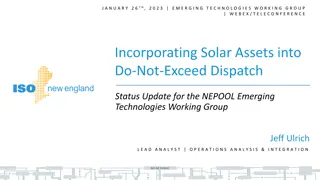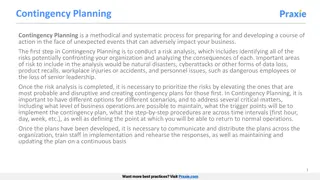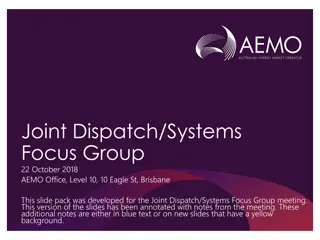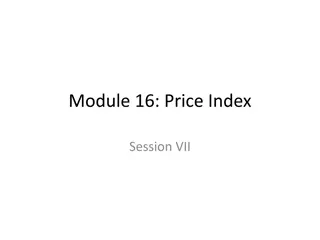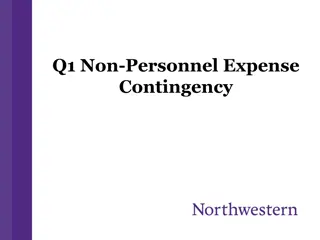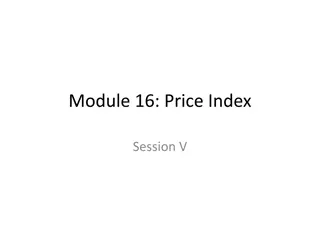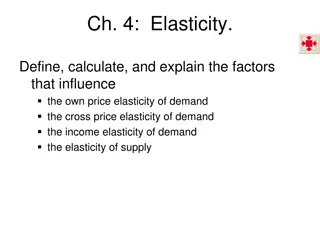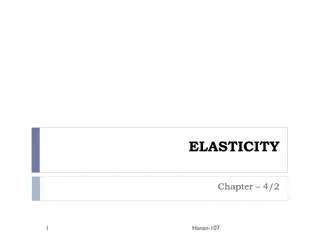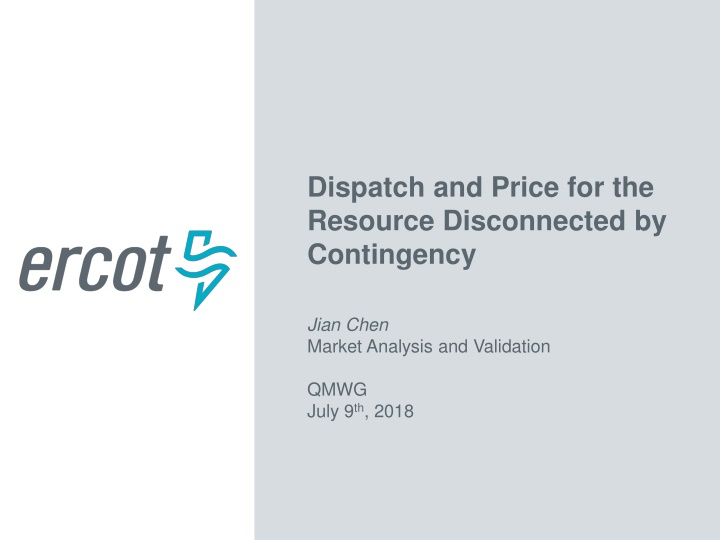
Resource Dispatch and Pricing Analysis for Contingency
Explore resource dispatch and pricing strategies in the event of contingency situations, focusing on factors such as shift effects, pick-up considerations, and price calculations. Gain insights into managing constraints and optimizing resource allocation efficiently.
Download Presentation

Please find below an Image/Link to download the presentation.
The content on the website is provided AS IS for your information and personal use only. It may not be sold, licensed, or shared on other websites without obtaining consent from the author. If you encounter any issues during the download, it is possible that the publisher has removed the file from their server.
You are allowed to download the files provided on this website for personal or commercial use, subject to the condition that they are used lawfully. All files are the property of their respective owners.
The content on the website is provided AS IS for your information and personal use only. It may not be sold, licensed, or shared on other websites without obtaining consent from the author.
E N D
Presentation Transcript
Dispatch and Price for the Resource Disconnected by Contingency Jian Chen Market Analysis and Validation QMWG July 9th, 2018
Resource Node and Resource Station D RN for UNIT_G1 Station B EPS Meter Station A Station C G UNIT_G1 2 PUBLIC 2
Contingency Definition and Constraint Overloading LN A-B-1 Station D line contingency for LN A-B-2 Station B Station A Station C G 3 PUBLIC
Contingency Definition and Constraint Overloading LN A-B-1 Station D line contingency for LN A-D Station B Station A Station C G 4 PUBLIC
Constraint Shift Factors and Downstream Applications For the real-time market, shift factors are calculated from EMS and then transferred to MMS for resource dispatch and price calculations. EMS RTCA Resource Base Point, Resource LMP (ICCP) Resource SF SCED Optimization System Lambda, Constraint Shadow Price Electric Bus SF RN Price, Meter Price Post Process 5 PUBLIC
Pick-up Effect for Generation Loss Under a generation loss scenario, the shift factor of the disconnected resource is NOT exactly 0, due to the consideration of the pick-up effect. The pick-up assumption is, in the case of a contingency involving generation loss, some of the other generators have to pick up the lost generation. Therefore, the MW carried by the disconnected resource will have some impact on the posting-contingency constraint. The shift factor of Electrical Bus associated with Settlement Point or Meter, however, does not consider pick-up effect. The shift factor for any Electric Bus disconnected by contingency is set to 0. 6 PUBLIC
Pick-up Effect G G2 Overloading LN A-B-1 G G3 Station D G SF for RN = 0 G4 G G5 Station A Station B Gen G1 MWBC 20 PF NA MWPC 0 SF 0.1 G2 50 0.25 55 0.2 G3 50 0.5 60 0.2 G4 50 0 50 0.1 G5 50 0.25 55 -0.2 Station C G Pick-up SF for G1: ??? ??? UNIT_G1 ? 1 7 PUBLIC
Shift Factors and Price Calculation The difference between resource SF(none-zero) and Electric Bus SF (zero) will lead to different Resource LMP and RN price. Curtailment and lower Resource LMP due to positive resource SF EMS RTCA Resource Base Point, Resource LMP (ICCP) Resource SF SCED Optimization Assuming positive SF after pick-up effect System Lambda, Constraint Shadow Price Higher RN and Meter price Electric Bus SF 0 RN Price, Meter Price Post Process 8 PUBLIC
NPRR833 - Modify PTP Obligation Bid Clearing Change The approved NPRR 833 will fix the modeling of PTPs in the DAM. With the NPRR, ERCOT will update the DAM optimization engine to address the situation where a contingency disconnects a Resource Node. The DAM Settlement Point Price will include that pick-up shift factor in the price calculation for the Resource Node. As part of the NPRR 833 project, ERCOT will also update the Real- Time Market so that the RT Settlement Point Price for the Resource Node will also include the pick-up effect. As currently being envisioned, the pick-up shift factor would not be applied to the real-time meter price under NPRR 833. This is due in at least part to the potential many-to-many relationship between resources and real-time meter prices. 9 PUBLIC
Other Factors related to Resource/RN LMP difference When resource and RN are both dead in base case, the dead bus logic for off-line resources shift factor is looking for the next active node, and the Heuristic rule for RN LMP calculation is based on Protocol 6.6.1 (1) The shift factor calculation for combine cycle logic resource is RT MW weighted, while the LMP calculation for combine cycle logic RN is HRL weighted Constraint element could be located between the resource and the RN Certain unit contingency could open the resource but not the RN 10 PUBLIC






